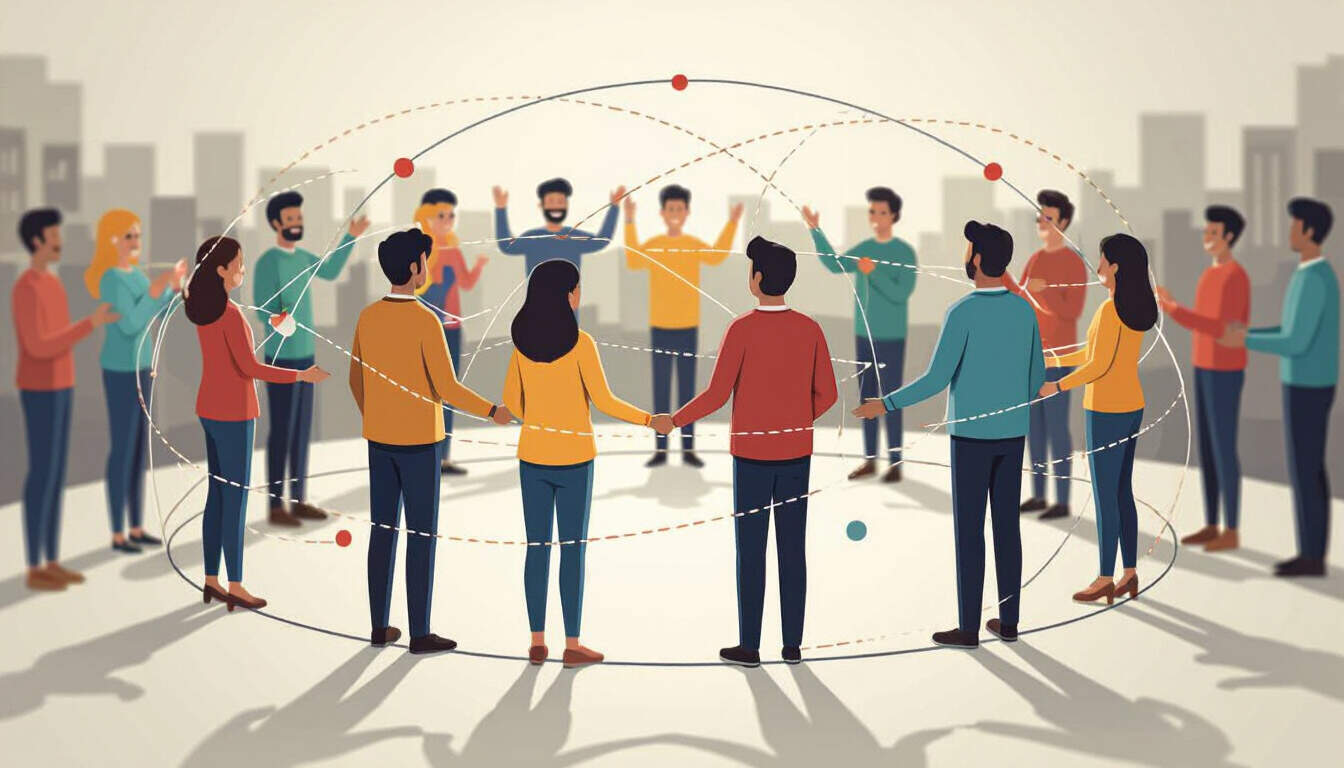Feedback Loops and Second-Order Thinking in Community Building
 by Marlene Keeling
by Marlene Keeling
Feedback loops play a key role in strengthening communities by creating cycles of interaction and growth. By applying second-order thinking, individuals can anticipate wider effects, leading to more effective community strategies for personal and professional development.

Feedback loops are essential patterns in various systems, where actions lead to reactions that influence the original system. In community building, these loops help maintain and improve interactions among members.
Second-order thinking involves examining the consequences beyond the immediate outcomes. This approach allows people to predict how initial actions in a community might ripple outward.
In community building, feedback often comes from member participation. For example, when a new idea is shared, responses from others can encourage further engagement, forming a positive feedback loop. This cycle can lead to increased involvement and stronger bonds.
Consider a group working on a shared project. If contributions are met with appreciation, members feel valued, prompting more input. Over time, this builds a supportive environment. Through second-order thinking, leaders can foresee that such encouragement not only boosts current participation but also fosters long-term loyalty.
Negative feedback loops also occur, where poor communication might cause disengagement. Recognizing these early can prevent escalation. In professional settings, teams use feedback to refine processes, ensuring sustained productivity.
The Role of Feedback in Personal Growth
For individuals, engaging in community activities with awareness of feedback loops enhances learning. Students might join study groups where peer input refines their understanding. A single discussion can spark ideas that lead to deeper exploration.
Second-order thinking here means considering how these interactions affect future opportunities. For instance, building networks through community events can open doors to career paths. This analytical perspective helps in making informed decisions about involvement.
In practice, online platforms exemplify these dynamics. A forum post might receive comments that guide improvements, creating a cycle of refinement. Users who apply second-order thinking can assess how their responses shape the community's overall direction.
Systems Thinking and Community Dynamics
Systems thinking provides a framework for viewing communities as interconnected parts. Feedback loops are central to this, as they show how changes in one area impact others. In community building, this means monitoring both positive and negative cycles.
For professionals, applying systems thinking means analyzing how team feedback influences project outcomes. A manager might note that regular check-ins create a loop of continuous improvement, leading to better results.
Curious individuals can explore these concepts through everyday experiences. Observing how a neighborhood initiative gains momentum from resident input illustrates a feedback loop in action.
To apply this effectively, one can start with small steps. Begin by seeking feedback on personal contributions and reflect on the broader implications. This practice aligns with cognitive processes that promote growth.
Benefits for Development
The integration of feedback loops and second-order thinking offers clear advantages. In personal development, it encourages self-reflection and adaptation. People learn to adjust behaviors based on responses, fostering resilience.
For students, this means better academic performance through iterative learning. In professional contexts, it drives innovation by anticipating potential challenges.
Real-world examples include volunteer organizations, where member feedback shapes programs. This ensures efforts remain relevant and effective, supporting ongoing engagement.
By prioritizing these elements, communities become more adaptive and inclusive. Individuals gain tools for navigating interactions with greater insight.
Practical Applications
- Identify existing feedback mechanisms in your community.
- Use second-order thinking to evaluate potential outcomes of changes.
- Encourage open dialogue to strengthen positive loops.
- Monitor for negative patterns and address them promptly.
These strategies can be adapted to various contexts, from educational groups to workplace teams. The key is consistent application and reflection.
In summary, feedback loops and second-order thinking form the backbone of successful community building. They provide a way to create sustainable and dynamic environments that support individual and collective growth.
